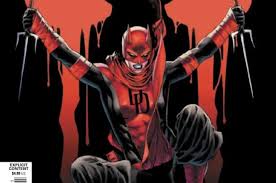Key Takeaways:
- Miller’s Daredevil broke new ground with mature storytelling, noir aesthetics, and iconic characters.
- Its once-groundbreaking darkness now seems dated compared to the nuanced emotional depth found in modern superhero comics.
- The run’s legacy remains intact, but it benefits from reflection—and from the enhancements added by creators who followed in its footsteps.
Frank Miller’s legendary work on Daredevil remains one of the most influential comic book runs in history. With his noir-driven style and psychologically rich characters, Miller transformed Marvel’s “Man Without Fear” from a B-list hero into one of the publisher’s flagship characters. Yet, nearly 45 years later, this once-groundbreaking run shows its age in a genre that has grown increasingly sophisticated.
A Visionary Run That Reshaped the Superhero Genre
When Miller took creative control of Daredevil in issue #168, he didn’t just bring in new characters—he redefined the very DNA of the series. Elektra’s debut added emotional complexity and a tragic love angle, while the introduction of Stick, Kingpin, and Bullseye grounded the book in a shadowy, morally gray version of New York’s Hell’s Kitchen.
Inspired by manga and film noir, Miller’s tone was revolutionary at the time. Unlike the brightly colored optimism of most superhero comics, Daredevil leaned hard into crime drama, psychological trauma, and urban decay. His visual storytelling, with heavy shadows and minimalist panels, set the stage for later dark epics like The Dark Knight Returns and Sin City.
Also read: Ready or Not S Rank Loadouts: Best Non-Lethal and Tactical Builds for Every Mission
From Groundbreaking to Outdated: When Darkness Stops Shocking
While Daredevil was praised for introducing mature themes into superhero narratives, what was once fresh now feels overly familiar. The shocking death of Elektra in issue #181 stunned readers in the 1980s, but modern audiences, conditioned by years of high-stakes comic deaths, often seek deeper emotional consequences than the visceral impact Miller offered.
Today’s comics—like Tom King’s Batman or Chip Zdarsky’s own Daredevil—take the grim and gritty template and layer it with philosophical, emotional, and political depth. Miller laid the foundation, but newer creators have expanded the blueprint in more nuanced directions.
Character Complexity Has Outgrown Miller’s Archetypes
Despite creating lasting figures like Elektra and revitalizing villains like Kingpin and Bullseye, Miller’s characterizations can now appear flat. Elektra, once celebrated as a bold, complex woman, is now often critiqued as a hyper-sexualized, tragic trope. Kingpin’s and Bullseye’s portrayals, while effective in their time, lack the inner turmoil and moral ambiguity modern readers expect.
Subsequent writers like Brian Michael Bendis, Ed Brubaker, and Ann Nocenti have injected these characters with much-needed nuance—shifting Daredevil from Miller’s brutal noir tale into a broader psychological epic.
Conclusion: A Legacy Set in Stone—But Not Immune to Time
Frank Miller’s Daredevil is still essential reading for any serious comic fan. It redefined what superhero storytelling could be and helped usher in a new era of mature, grounded narratives. But like all genre-defining work, its brilliance is partially dulled by its own influence. As the medium evolved, the once-revolutionary aspects of Miller’s run now feel like a launching point—important, yes, but also incomple
Disclaimer: The information in this article is for general purposes only and does not constitute financial advice. The author’s views are personal and may not reflect the views of GameDegen.com. Before making any investment decisions, you should always conduct your own research. GameDegen.com is not responsible for any financial losses.




